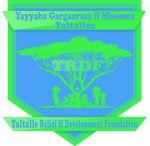Russian experts create a scheduled system for energy-efficient homes
Boffins of South Ural State University carried out a study of wall surface fragments having a screen framework and analyzed feasible temperature loss.
Because of this, a universal mathematical model was created which will reduce power usage by removing extra temperature loss, and certainly will, in addition, may be used for power category of structures under construction and procedure. The outcome associated with the research had been posted within the highly-rated medical log Magazine of Civil Engineering (Scopus, Q1).
The purpose of contemporary construction is always to build dependable and buildings that are energy-efficient. But, regrettably, a big level of heat loss happens through windows and other “cold bridges” for the building envelope. Following present trend towards a basic decrease in the expense of warming structures in Russia, brand brand brand new building codes have now been released that tighten demands for heat-saving parameters of creating structures and building materials. Nonetheless, the employment of innovations in neuro-scientific construction and energy preservation is not sufficient when designing an energy-efficient house. Much is dependent on the standard of execution of higher level design solutions. Boffins for the Department of Civil Engineering and Construction Theory associated with Architectural and Civil Engineering Institute of SUSU carried out field studies, computer simulations, and laboratory tests to investigate temperature losings, taking into consideration the structural features and manufacturing defects associated with screen unit, which impact the last power effectiveness course regarding the building.
“Our task would be to examine the way the properties of screen structures and junctions impact the improvement in temperature flux and temperature areas. a model that is mathematical developed in the application which takes under consideration exactly exactly just how different defects affect the power effectiveness for the screen brides finder net while the building in general. The most typical defects were simulated in the laboratory,” says one of the project’s authors Albert Bayburin, Doctor of Technical Sciences, professor of the Department of Construction Production and Theory of Structures of SUSU to confirm the adequacy of the computer calculation.
Energy effectiveness course is an indicator that assesses just exactly how effectively a building uses thermal and electric power during procedure. The bigger the vitality effectiveness course, the less renters can pay for temperature and electricity.
Probably the most typical defects had been modeled within the laboratory. The tests were carried down in a certified research laboratory associated with the Department “Construction Production and Theory of Structures” of this SUSU Institute of Architecture and Civil Engineering. The conditions associated with heat that is stationary had been founded utilising the KHTV-24.0 climatic chamber (climatic chamber of cold, heat and dampness) manufactured by NPO Specclimate LLC. This gear permits to give very accurate experiments.
“The test had been carried out under heat conditions corresponding to your Chelyabinsk area. The heat into the laboratory had been 21 ° C, as well as in the chamber that is climate 34 ° C. Throughout the test, heat losings had been analyzed, which be determined by a true amount of design options that come with the window framework, like the geometric, thermal and real properties of walls, windows, lintels, and bones ” explains Albert Bayburin.
Having gotten the total link between a laboratory test, SUSU researchers developed some type of computer model and examined the persistence associated with the results. This permitted us to produce a universal model that is mathematical enables you to quickly assess temperature loss through the screen framework at construction web web sites without complex thermal tests and will be properly used for construction control and power category of structures.
